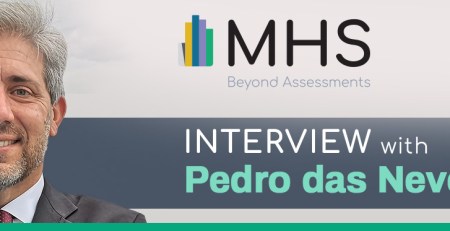Bridging the gap: Videoconferencing in corrections
If the COVID-19 pandemic taught criminal justice professionals anything, it was that the criminal justice system was not immune to the sweeping effects of the pandemic. The pandemic brought various challenges to those who are incarcerated, on probation, or on parole within North America. Correctional and probation/parole officers saw an influx of individuals presenting with increased pandemic-related needs, such as loss of employment or illness1. Because these staff members do not have control over how many cases they receive and manage, they had to work out new effective strategies to manage complex caseloads, quarantines/lockdowns, and the psychosocial impacts of the pandemic1,2. One strategy, videoconferencing, has emerged as a flexible tool to enable remote supervision of individuals on probation and parole and allow those who are incarcerated to keep in contact with others outside of the prison system. The use of videoconferences is done without ever having to transport and then physically monitor interactions.
How can videoconferencing transform corrections
Videoconferencing can act as the bridge for family and friends to have regular contact with individuals who are incarcerated. Incarcerated individuals could be in prison out of state or in facilities their loved ones cannot access due to their remote nature, or a variety of other issues that may prevent visitation. Video visits are often seen as a convenient and affordable way for the families of those with incarcerated loved ones to speak and maintain relationships with them. Keeping in contact with loved ones is critical. Research shows that those who have even one visit during their stay in prison were 13% less likely to re-offend and 25% less likely to be incarcerated for violating parole3,4.
Staying in touch with family and friends may help prevent re-offending by enabling individuals to build and maintain relationships, as well as discuss accommodations and employment opportunities outside of prison. It is generally well understood in the research literature that those with a criminal record have issues finding and maintaining employment, as well as affordable and safe housing1. Many individuals are sent back to prison/jail after being released into the community based on parole or probation violations5. Frequent and accessible videoconferencing, in tandem with in-person visitations, can facilitate these relationships and remove several barriers (financial, temporal, etc.) after individuals are released from custody.
Naturally, the most appealing benefit for public safety organizations is the potential for significant cost savings and to increase the support individuals receive from their correctional or probation/parole officers. Videoconferencing is a less intensive way of conducting pre-sentence interviews or allowing individuals to contact their clinician for assessment and follow-up. It also allows correctional staff to be reassigned to other important tasks. Videoconferencing can save staff time by:
- Reducing the need for staff to monitor in-person visits physically;
- Reducing or eliminating the need for visitor or contraband searches;
- Reducing the need for staff to move individuals around in a facility, or for legal professionals or probation/parole officers to physically travel to their client’s location4.
“Video visitation is the wave of the future for correctional facility communication.”
– A law enforcement officer when discussing the use of videoconferencing (National Institute of Corrections, 2019, p. 9).
One underrated benefit of videoconferencing in community corrections is the comprehensive system of care it can create. For example, the District of Arizona partners with the Eastern District of New York to utilize experienced probation officers from New York to assist with pre-sentence reports, a key tool that judges use to consider mitigating and/or aggravating factors that informs sentencing options and any release conditions6. Because the workload in the District of Arizona has outpaced the hiring of qualified probation officers, the partnership was created as a pilot to test whether resources (such as probation officers) can be pooled to effectively tackle large workloads, while still providing the same level of care at a reduced cost6. If one district is struggling with managing its cases, another district with availability can help to ensure continuity of supervision and care, all without ever having to travel. This implementation of videoconferencing creates an integration between different districts, which manufactures a more robust and adaptable correctional system.
Other considerations when using videoconferencing in corrections
It is important to consider the potential limitations or drawbacks of connecting virtually with those who are incarcerated or on probation/parole. For example, videoconferencing is not accessible to everyone. There are certain fairness concerns to consider, such as incarcerated individuals who do not have access to a computer or criminal justice professionals and probationers/parolees dealing with an unstable internet connection during videoconferencing, which results in poor video and audio quality6. Stakeholders (family members, legal professionals, etc.) can become dissatisfied with videoconferencing, especially when they lack computer skills or if the process is fraught with technical difficulties that diminish the value of video calls over an in-person setting.
“Being in the same room is something you can’t replace.”
– Families when discussing in-person visits with those incarcerated (National Institute of Corrections, 2019, p. 17).
While videoconferencing is a valuable tool correctional and probation/parole officers can use in their practices, it should not replace in-person conversations or meetings. Instead, probation officers and correctional officials should utilize a hybrid-style of in-person and remote meetings when talking with clients or deciding on visitation styles in more restrictive correctional settings (i.e., jail or prison). The details of this arrangement are specific to each agency, as well as the budget and organizational preference for videoconferencing. Video calling should supplement, rather than replace, the established routine within these organizations4. Stakeholders should understand the limitations of both traditional and remote supervision or videoconferencing. For example, it is critical for a young child to visit their incarcerated mother, and videoconferencing would likely be incompatible with maintaining this connection, whereas an incarcerated individual 100 miles away from their legal counsel will find videoconferencing suitable.
Videoconferencing, especially within a prison/jail where access will be limited, has the potential to replicate the widespread mistreatment against incarcerated individuals by telephone providers. A vast expanse of literature outlines the price gouging of incarcerated individuals by telephone providers, where long-distance calls can be as high as $1 per minute7. The practice of charging incarcerated individuals is problematic because they are often housed in remote communities away from where they live, which results in every call being long distance. In this case, providing video communication services to incarcerated individuals could be seen as a potential money-making operation, where security, privacy, and revenue generation are the top goals. For these reasons, videoconferencing poses potential challenges in this sensitive setting.
Breaking down silos and maintaining relationships through videoconferencing
The criminal justice system is often siloed into specific impermeable segments. Videoconferencing is an excellent tool that can bring stakeholders, such as lawyers, correctional officers, probation/parole officers, and other individuals involved in the justice system into the same sandbox. Videoconferencing can also effectively supplement in-person visits or meetings in a correctional setting, creating a hybrid working relationship between probation/parolees and their case managers, eliminating the need for travel or physical supervision for incarcerated individuals. The use of videoconferencing in this way results in critical time savings and re-prioritized assignments for correctional staff.
Unfortunately, videoconferencing is not a one-size-fits-all solution. Several considerations, such as the regulation of technology providers to ensure fair prices, equity in terms of access to resources, and familial access to computers or internet connection, currently aren’t easily overcome.
The experience of the pandemic and the rapid pace of technology have demonstrated how videoconferencing is a promising option to many resourcing, security, and humanitarian concerns with communicating within the correctional system. More research is needed to further showcase the effectiveness of this and other remote technologies in the public safety space.
References
1 Schwalbe, S. J. C., & Koetzle, D. (2021). What the COVID-19 pandemic teaches about the essential
practices of community corrections and supervision. Criminal Justice and Behavior, 48(9), 1300–1316. https://doi.org/10.1177/00938548211019073
2 Galleguillos, S., Schwalbe, C., & Koetzle, D. (2023). Building accountability and client–officer
relationships through videoconferencing: Exploring best practices for community corrections. European Journal of Probation, 0(0), 1-23. https://doi.org/10.1177/20662203231165372
3 Minnesota Department of Corrections. (2011). Key findings summary: The effects of prison visitation on
offender recidivism. St. Paul: Minnesota Department of Corrections, November 2011. Retrieved May 1, 2023 https://mn.gov/doc/assets/11-11PrisonVisitationResearchinBrief-Final_tcm1089-272782.pdf
4 National Institute of Corrections. (2019). Virtual communication in corrections: a guide to the benefits
and drawbacks of video conferencing and other forms of technology. Washington, DC: US Department of Justice.
5 La Vigne, G. N., Naser, R. L., Brooks, L. E., & Castro, J. L. (2005). Examining the effect of incarceration
and in-prison family contact on prisoners’ family relationships. Journal of Contemporary Criminal Justice, 21(4), 314–. https://doi.org/10.1177/1043986205281727
6 United States Courts. (2012, April 18). Probation offices look to technology to offset budget, staffing reductions.
United States Courts. Retrieved May 3, 2023, from https://www.uscourts.gov/news/2012/04/18/probation-offices-look-technology-offset-budget-staffing-reductions
7 Goodyear, S. (2020, January 29). Company behind Bell Let’s talk profits off vulnerable inmates through
phone deal with jails: Lawyer | CBC Radio. CBCnews. Retrieved April 26, 2023, from https://www.cbc.ca/radio/asithappens/as-it-happens-tuesday-edition-1.5443076/company-behind-bell-let-s-talk-profits-off-vulnerable-inmates-through-phone-deal-with-jails-lawyer-1.5444598










